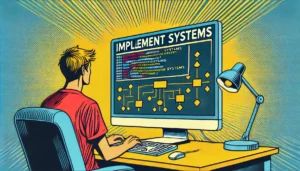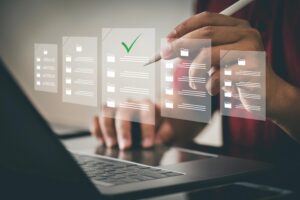One of the final steps in any ERP implementation is going to be your training and is usually done the week before the expected go live date. The training can be done online or onsite although at VISCO our customers request us to come onsite for the training approximately 80% of the time.
Online Training-When doing the training online, you can expect user attention spans to be shorter as the presentation is less engaging and if the user is learning about parts of the system that they do not expect to use they will tend to tune out within minutes. For this reason we suggest doing multiple sessions and keeping each session short (1-2 hours) and only having the users who be using each of the modules involved in each session. Three to Five web sessions over the course of a week should be enough.
Onsite Training-Onsite training is the desired method and we find implementation success rates approximately 25% better when training is done onsite.
It is best to print all the training documentation before starting and come to the training prepared with multiple sample transactions that can be used during the training. Although it is not necessary for every user to have their own computer during the training, we do ask to have at least one additional machine available for users to run test transactions on after each module is presented. It is also very helpful to have the system administrator in all training sessions as they can help the users and the VISCO trainer because they will have the business and system expertise.
Although each training will be customized to fit the specific structure of the company, a typical training schedule would look like this:
Session 1: System administration-Working only with the system administrator(s) we discuss the tools available to them to customize the interface, configure the accounting integration, manage tables, etc
Session 2: Understanding the Data-Working with the entire group we will go through the information that is available for all of the master tables (products, customers, vendors, warehouses, freight carriers) and how this information flows through the rest of the system
Session 3: Purchasing, Inbound Logistics and Inventory-Working with the Purchasing and Logistics teams we will start by reviewing how Purchase Orders and created and follow that by allowing one of the members of the purchasing team to create a purchase order with the group watching. Although this can be somewhat stressful, its useful for the other users as well because they will see some of the pitfalls and how to avoid them.
We then review how to create containers/shipments, how to manage all the logistics data associated with these shipments, create and manage the documentation required for importing the goods, arranging for drayage and notifying the warehouse of an incoming container and finally receiving the container into inventory. Again, this gives the end users an opportunity to try receiving in a container so they begin to get the feel of how information flows through the system
Session 4: CRM tools, Sales Orders and outbound logistics-Working with just the sales team we look at how users can track customer inquiries, supplier quotes and creating quotes for customers. We then take a look at how this information can be used to help them sell more and give the users an opportunity to create some inquiries and quotes on their own.
The Sales Administrators and outbound logistics team members can join the group to learn how sales orders are processed, allocated against inventory and then deliveries are scheduled. The users have a chance to processes some orders on their own including creating the Pick Tickets, Delivery Orders, Route Plans, and Packing list documents to process deliveries
Session 5: Accounting and Reports-Starting with just the accounting team we explain how the accounting integration work (posting transactions into QuickBooks or other accounting system), and go through the creation of invoices and entering of bills. The users have a chance to run through examples here to and see how they appear in the accounting system once they are posted.
Finally we bring the entire group back together to review the tools available in the system to help them pull relevant information out of the system and do their jobs efficiently.
It is not unusual for us to find a few bugs or workflow issues during the training sessions and prefer to have a couple of days buffer to clean up and then clear out test transactions prior to the go live date.
Going Live
Once transactions have been cleared and live data is being entered, it is desirable to allow for 1 week-1 month of “Running parallel” where users are entering information into VISCO as well as their old method. Although this does mean additional work during this time it is an opportunity to transition gradually and if users are stuck on something in the new system it does not negatively affect the business. Once the parallel period is over the accounting integration is turned and users can begin running exclusively in VISCO.
Please be prepared for an uncomfortable one-three months as users are getting used to the new system. It is inevitably awkward and of course the value is not seen in the system until there is enough information in the system to be able to pull valuable information out. Over time it will become second nature and the reports and efficiencies become invaluable.





